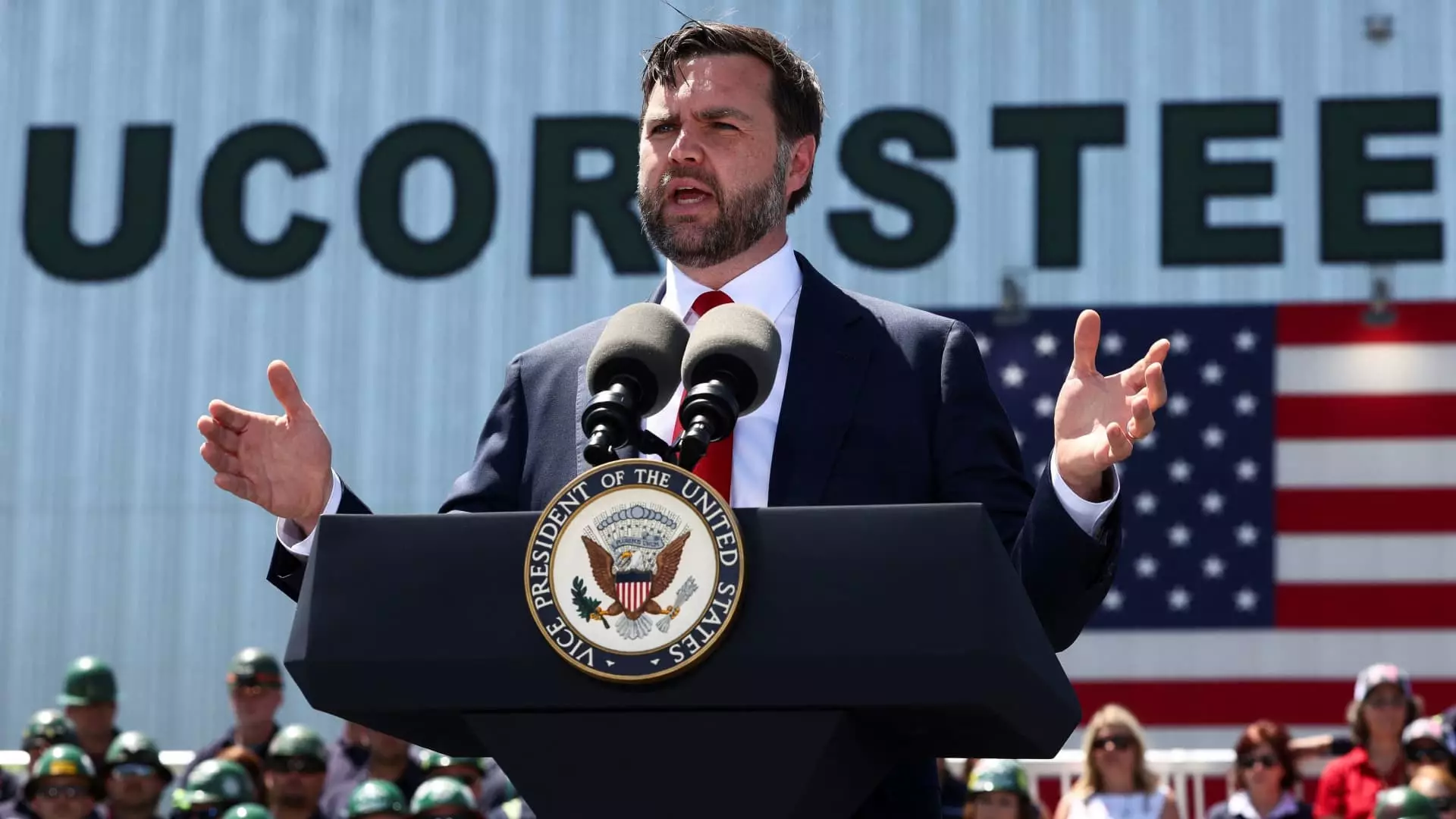In an alarming turn of events, President Donald Trump and Vice President JD Vance are not merely advocating; they are deploying an aggressive campaign against the Federal Reserve. Their collective push for reduced interest rates is not just a call for economic relief but a declaration of intent, beckoning the very question of monetary integrity. As inflation data reflects a sluggish rise, the implications of their insistence are worrisome, eroding the credibility of an institution meant to underpin America’s financial stability.
Vance, echoing Trump’s sentiments, has labeled the Fed’s reluctance to adjust rates as “monetary malpractice.” This statement is not only incendiary but also indicative of a broader misunderstanding regarding the role of the central bank. With the Consumer Price Index (CPI) showing minimal fluctuations, one would think that responsible governance involves patience and strategic policy-making, rather than succumbing to political whims that can destabilize the economy.
Inflation Misinterpretation and Its Consequences
The recent CPI report showed merely a 0.1% increase across both all-items and core measures. While these figures seem trivial, viewing the broader economic landscape through such a narrow lens is reckless. Vance’s eagerness to tie tariff implications to inflation disregards the complexities that come with economic data interpretation. The central bank’s cautious stance may well be a prudent approach to mitigating potential long-term repercussions stemming from premature monetary easing.
Trump’s demand for a full percentage point cut from the fed funds rate—a drop to between 3.25% and 3.5%—reflects more than just economic strategy; it signals a worrying eagerness to prioritize short-term gains over long-term stability. The reality is that while market speculation leans towards a cut in September, yielding to external pressures without thorough analysis could exacerbate inflationary pressures in the future.
The Market’s Reaction and Broader Implications
Amidst this political theatrics, financial markets remain jittery, assigning little probability to actual rate cuts following the upcoming Federal Open Market Committee (FOMC) meeting. Concerns loom that by advancing such radical proposals, the administration might unwittingly stir investor unease, leading to upheavals that ripple through everyday Americans’ finances.
The call for lower interest rates amidst modest inflation levels presents a paradox: while it seeks to foster growth, it could inadvertently risk overheating the economy if consumer spending surges unchecked. As Elyse Ausenbaugh of J.P. Morgan Asset Management aptly notes, the Fed is stuck in a precarious situation, caught between a desire to stimulate growth and worries over acting prematurely in a climate of uncertainty.
Politicizing the Economy: A Dangerous Precedent
The current administration’s tactics—turning economic management into a political tool—sets a treacherous precedent. They rally public sentiment through misleading narratives that could divert attention from the necessary foundational changes required within the economy. Rather than fostering an environment of fiscal understanding and prudent policy-making, political leaders like Trump and Vance risk undermining the Fed’s independence, a cornerstone of economic resilience.
This double-teaming effort isn’t simplistic in its intentions; it’s deeply layered and ultimately misguided. True economic leadership requires the wisdom to allow institutions like the Federal Reserve to operate free from political maneuvering, ensuring that monetary policy remains anchored in data and long-term strategy rather than short-sighted advantage. The stakes have never been higher, and the path taken by this administration demands serious scrutiny and accountability.

